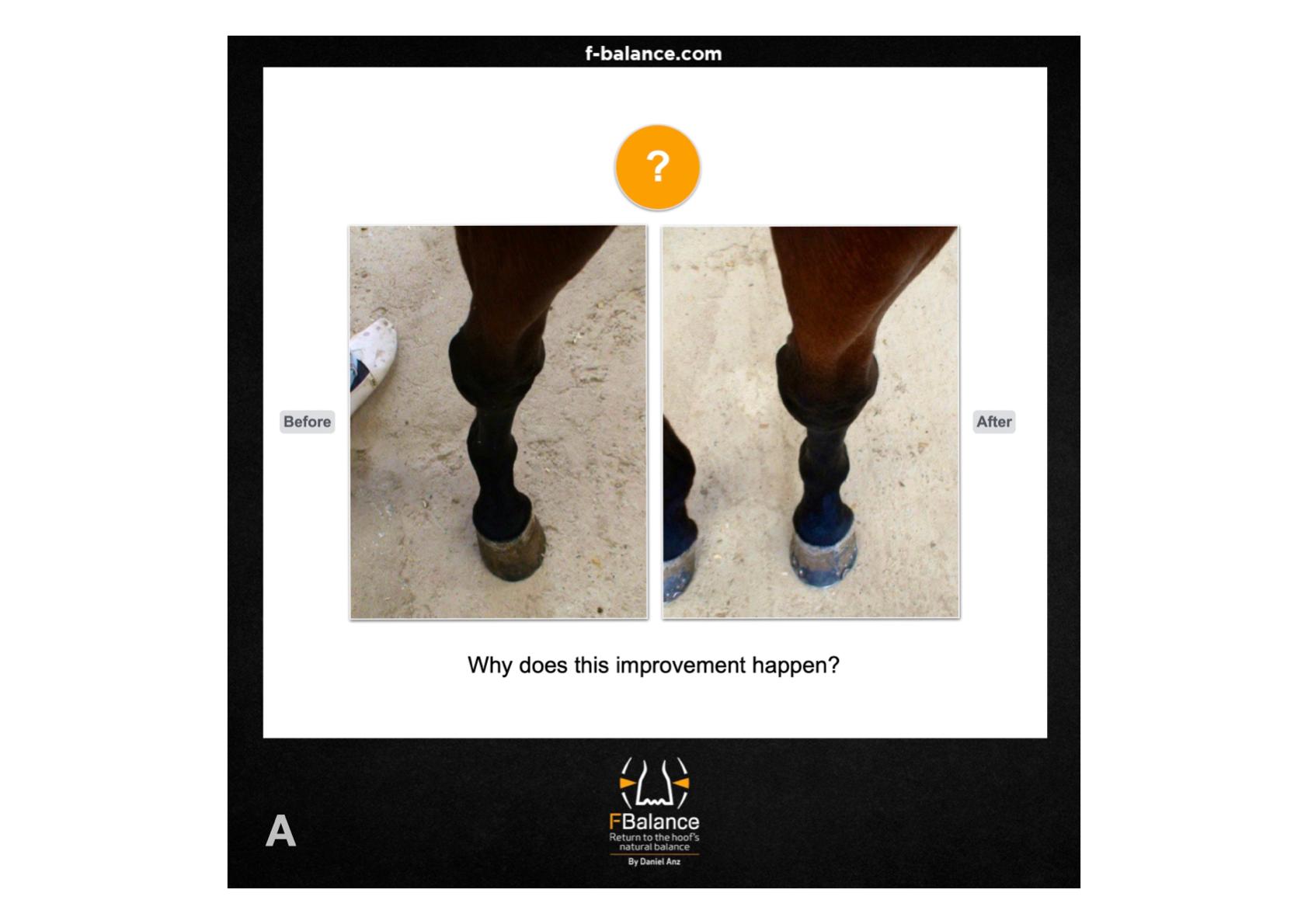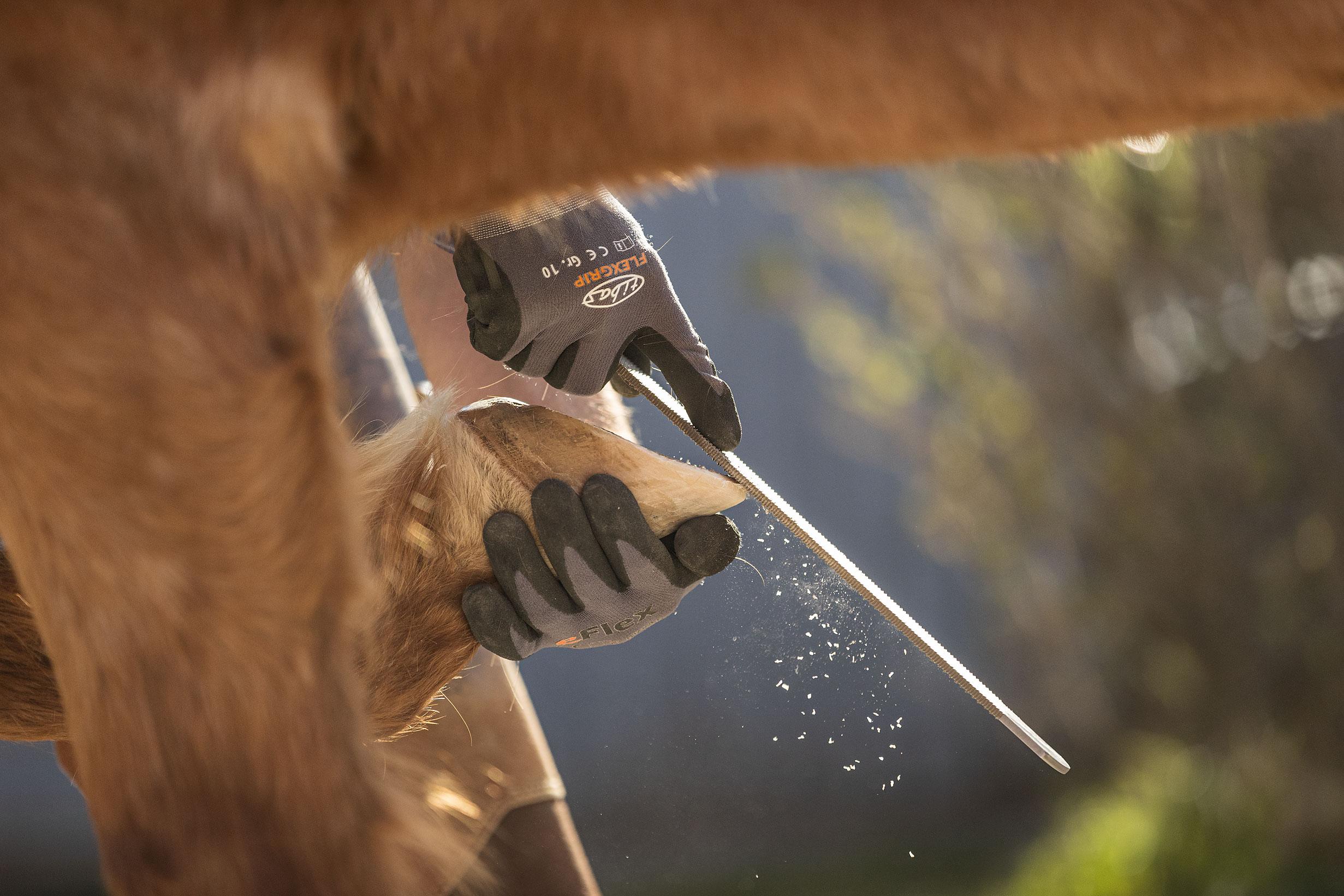11 July, 2024
Why is the horse's balance only achieved if we combine the level of the functional sole with the longitudinal flexibility of the foot during trimming?

Picture A shows the before and after of the left forelimb of a racehorse. This improvement was possible because I didn’t trim the foot flat.
During trimming I respected the nature of the foot. I kept the same length in both heels, having considered the stress point of each. As we know, each stress point corresponds to the level of the functional sole. Then, I cut out the grown wall, taking as a reference the level 0 or level of the functional sole.
At no time did I try to obtain a flat trim, but I followed the level of the functional sole. This way of trimming allowed me to discover the lateromedial imbalance in the foot. Remember that it is impossible to discover lateromedial imbalances if we trim flat.
Now look at image B. This good work belongs to the farrier Augusto Almonacid (FB-PRO) from Colombia.

Picture 1 shows an unbalanced foot in the lateromedial direction. The greatest load is on the medial side and the whole limb is tilted in that direction. The horse is compensating for this imbalance through its muscles. Certainly, his entire musculoskeletal system is being affected. Line 2B is parallel to the ground, but line 1B is tilted, causing the body imbalance.
Picture 2 shows the change of position of the limb after trimming the hoof respecting its natural references. Line 3B has shifted from medial to lateral (arrow 1). This displacement of line 3B is possible because the “roll effect" has occurred on the lateral side of the foot. The “roll” is the change of angle on that side without altering the 0 levels of the heel and toe (photo 4). The displacement of line 3B allows to release the pressures on the caudal side of the foot (line 4B) and also allows to obtain a "flexion gap” on the medial side of the foot (arrow 2). The flexion gap will allow the descent of that side of the foot, from the centre of the toe towards the heel (photo 3, arrow 3). This releases the pressure on the caudal side of the medial side of the foot. Note that line 5B is in its centre and that line 6B has regained its natural position. This is possible because the foot is longitudinally flexible.
The letter "F", from the words F-Balance®, comes from the F-flexibility in the longitudinal direction of the foot, and the F-Balance® concept is the consideration of the level of the functional sole in combination with this flexibility.
This allows the horse to regain its natural balance, regardless of whether or not there are established deviations in the conformation of the limb. The limb in the picture had no deviations, which is why line 5B looks perpendicular to the ground. If the horse had an established deviation in its limb, line 5B would not be perpendicular to the ground, however, the horse would still have regained its natural balance to its self-determined right point.

